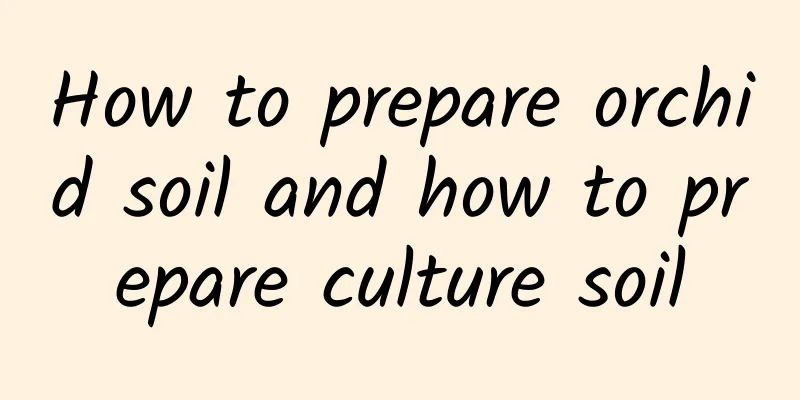Key points of wintering management technology for loach

|
The market prospects of loaches and eels have been very good in recent years, and many people are breeding them. Winter is coming soon, and the survival and health of loaches in winter also require careful management and preparation. Below is an article on the key points of loach overwintering management techniques. 1. Nutrition accumulation Loaches need to accumulate enough nutrients and energy before hibernation. Therefore, it is necessary to strengthen feed management before wintering, feed more nutritious bait, and ensure that the loach is full to facilitate wintering. The bait should contain 50% animal bait and 50% plant bait. As the water temperature drops, the loach's food intake decreases, and the amount of bait should be reduced accordingly. When the water temperature drops to 15℃, the daily feeding amount should be 1% of the total weight of the loach. When the water temperature drops below 13℃, you can stop feeding. When the water temperature drops to 5℃, the loach will dive into the mud to overwinter. 2. Wintering environment Choose a pond that is sheltered from the wind, facing the sun, has good water retention properties, and has thick silt on the bottom as a wintering pond. The water storage in the wintering pond should be deeper than that in an ordinary pond to ensure sufficient water supply. Before wintering, the wintering pond and feeding table should be cleaned and disinfected to prevent toxic substances from harming loaches. 3. Fertilization After the wintering pond is disinfected and cleaned, before the loaches enter, apply an appropriate amount of organic fertilizer , such as pig, cattle and poultry manure, to increase the thickness of the sludge, ferment and increase the temperature, and provide an ideal wintering environment for the loaches. 4. Choose overwintering loaches Choose loaches that are large in size, strong in physique, and free of disease and injury as parents. This type of loach has strong resistance to cold and disease, which is beneficial to improving the survival rate over the winter. The stocking density of overwintering loaches is usually 2 to 3 times higher than that of conventional breeding. 5. Insulation and cold protection measures During the winter, the water temperature should be maintained at 2~10℃, the water level in the pond should be slightly higher than usual, and the water depth should generally be controlled at 1.5~2 meters. When adding new water, try to use groundwater. Dig holes more than 30 cm deep in ponds and paddy fields , slide them, and ensure basic temperature. Cover the pit or slide with straw to enhance insulation. Farmers use small tunnels in their courtyards to allow loaches to overwinter naturally. Properly concentrating the overwintering loaches and laying livestock and poultry manure for insulation will have better results. 6. Wintering Box Wooden wintering boxes can be made with specifications of (90-100) cm × (25-35) cm × (20-25) cm. The boxes are filled with 18 to 20 cm of fine mud. Each box can hold 6 to 8 kg of loaches. The soil and loaches must be packed in layers. When packing, first put in 3-4 cm thick fine soil, then put in about 2 kg of loaches, put in 3~5 layers, and finally put in fine mud, nail the box lid, and make 6~8 small holes on the box lid for ventilation. After the box lid is nailed firmly, choose a wintering pond that is sheltered from the wind and facing the sun, and sink the wintering box to less than 1 meter, which will help the loaches to overwinter safely. The above are the preparations for loach to overwinter. In addition, loach is very sensitive to changes in water temperature. Except for the areas in southern my country where the water temperature is not lower than 15℃ all year round and loaches can be raised all year round, the breeding period of loaches in other areas is 7-10 months, with a low temperature wintering period of 2-5 months. When the water temperature drops to around 10℃, loaches will enter hibernation. In most parts of my country, loaches generally burrow into the soil 15 cm deep to hibernate in winter. Because loaches can secrete mucus on their body surface to keep their body surface and surrounding areas moist, they will not die even if it does not rain for a month.
|
<<: How many days does it take for mint to germinate after sowing?
>>: Key points for managing grapevines overwintering
Recommend
Is lotus easy to grow? How to care for it at home
1. Is it easy to raise? Lotus is also known as wa...
Cultivation methods and precautions of golden plum (care and management of potted golden plum)
The Chinese name of Golden Plum is Double-Pod Cas...
Is fishtail palm poisonous? Can it be grown indoors?
1. Is it poisonous? It is poisonous, and the pois...
What does chrysanthemum represent and what are the taboos
1. What does it represent? 1. Good luck and longe...
Camellia cultivation methods and precautions
1. Environment Camellia has certain requirements ...
When is the flowering period of purple bamboo plum, and how long does it take for the flowers to wither?
1. How long does it take for flowers to wither? I...
How to cultivate moth and butterfly flower
1. Maintenance methods 1. Temperature: The temper...
How to cultivate angelica
1. Maintenance methods 1. Temperature: Angelica l...
How to grow daisies on the balcony and what to pay attention to
1. Adequate sunlight An environment with sufficie...
Common ornamental plants in northern winter
one. Red yew: The red yew is a shrub and a relati...
Cultivation methods and precautions of chili pepper
1. Maintenance methods 1. Soil: When breeding, yo...
Breeding methods and precautions of woolly rhododendron
1. Potting soil As for pots, it is generally more...
How to grow potted banana trees? Cultivation methods and maintenance matters
How to grow banana trees in pots 1. Choose the so...
Can I soak the pot when watering the green radish? Can I add vinegar?
1. Is it possible to soak the basin? When waterin...
How to prune azalea
1. Bud pruning When the new buds of azalea sprout...









